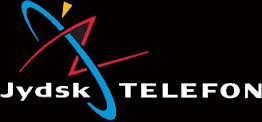What made Dataco so incredibly successful? How could we launch a complete LAN/WAN product line and achieve global coverage in less than two years and reach a position to sell the entire company in just four years?
Some of the “unfair” advantages of coming from a small country with its own language are:
- You are forced to speak foreign languages,
- You are forced to look beyond your own borders for business growth, and
- You don’t have a lot of money to play with.
When I received “the” phone call in the spring of 1986, I was country sales manager for Control Data Corporation in Denmark.
It was my job at Control Data Corporation to sell Cyber mainframes, software development projects and Cybernet data services in Denmark. It was also my job to introduce new Control Data businesses to the Danish market.
In those days, Control Data Corporation was not doing well in the US. If you could deliver your revenue numbers, “corporate” would leave you alone and give you a lot of freedom. We used this “freedom” to start and grow businesses that had virtually no roots with our owners in the USA.
The Danish market was and still is a very small market – approx. 0,36% of global demand for IT-related products and services. Selling US products into this tiny market was my job and it was a job I did very well (made it to the 100% Club every year and one year I even made the Summit Club!). I was on the list of “promising potential” for a career in the Worldwide Headquarters in Minneapolis, Minnesota, USA. I was doing well, but the prospects for Control Data Corporation didn’t look great in those days.
Then the phone rang.
On the line was Michael Mathiesen from “Scandinavian Dataco.” (Never heard of him or them!).
They were looking for a VP (sales & marketing) to take their new line of LAN/WAN products to the market.
After interviews, tests and what have you, I was offered the job and took it.
I left mighty Control Data Corporation and the prospect of a career climbing the corporate ladder step-by-step to the executive dining room at the top of the WHQ building on Route 101 in Mendota Heights in Minneapolis, Minnesota, USA. Instead, I was propelled directly into the “top executive team” of Scandinavian Dataco, a startup with 15 people, with offices in a shack by the Copenhagen Free Harbor, hardly any revenue, but a pretty impressive “burn rate” (a term invented much later).
From 0,36% to 100%
From one day to the next my potential market had increased from 0,36% to 100%. That’s an 278 fold increase!
I felt like a child in a toy shop.
To the Dataco Executive Team, it was clear from day one that the success of the company depended on our ability to take shares of the 100% and not only of the 0,36%. It was also clear that the funding for penetrating the 99,64% would have to come from the 0,36%. We would need to build a solid position in Denmark first and then go global next.
All resources (and I mean all!!) were thrown in to generate traction in Denmark. Everyone in the company was out selling to people they knew and who knew someone who knew someone. The most important deal was landed by our VP of R&D, Peter Videcrantz. He managed to get one of the four Danish Telcos (Jydsk Telefon) interested in replacing their entire internal data communication infrastructure with our system. If we could close that one we would be blue-stamped and jump the chasm (that book wasn’t even written by then) in one elegant leap.
Choosing the channel
During the process of getting me on board we obviously discussed “how” to grow revenue fast. I don’t remember who made the suggestion, but we all agreed that we needed to build a channel of resellers. The reasons for making this decision were very simple:
- We didn’t have the resources to scale the business as fast as our ambitions demanded by doing direct sales only.
- We didn’t have the resources to grow market penetration as fast as the window of opportunity demanded by doing direct sales only.

I didn’t have any experience with operating through a channel when we made that decision. I just thought it made sense on the “logical level.” With Control Data I was the channel partner of other vendors, so I had that experience!
Getting lighthouse customers
Having the channel decision in place before launching the products should prove to be a gigantic advantage.
We won the business with Jydsk Telefon and signed up their Business Services Division as a reseller. Seen from the outside this wasn’t exactly a clean channel partner setup, but it proved to be an extremely powerful cocktail for the next phase.

With Jydsk Telefon as a customer and a reseller, all doors were now open. Banks, insurance companies, manufacturing companies, retailers and everyone else wanted to talk to us. “If it is good enough for Jydsk Telefon, then it is also good enough for us.” And we took those meetings, but we never fulfilled a direct sale. We closed the deals and asked the customer who he preferred as the implementation partner. Then we took the deals to the resellers. Using this approach we could pick and choose our resellers and I don’t recall a single one rejecting to accept an order. The rumors spread and now resellers were knocking on our doors. We signed up all the big names and we rapidly approached the so-called tornado (we didn’t know this concept in those days) and the tipping point (also unknown to us). The only real defeat I remember was when the Danish Parliament chose a solution from Digital Equipment Corporation delivered by Datacentralen (a company owned by the Government) over a solution from Norsk Data based on our system. Being slapped by your own government hurts, but what doesn’t kill you makes you stronger. We persevered and continued to grow our market share in Denmark nevertheless.



Pingback: The Friendly Orange Glow: The Untold Story of the Rise of Cyberculture - TBK Consult
Pingback: The Friendly Orange Glow: The Untold Story of the Rise of Cyberculture - Words stir emotions - emotion drives behaviour
Pingback: How Customers Buy… And Why They Don’t: Mapping and Managing the Buying Journey DNA - TBK Consult